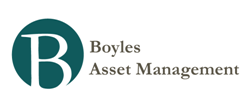WSJ: Albert Edwards Has Another Reason You Should Worry About Profits
Last week the BLS revised the unit labor cost rise in Q2 up from 2.2% to 3.3% quarter over quarter. US non-farm business unit labour costs are now rising by 2% year over year. That is very bad news for profits. Bad news for equities. And because the pace of ULC is a key driver of inflation (upwards in this instance), it is bad news for an increasingly criticised and divided Fed.
Since labour costs overwhelmingly dominate corporate costs, trends in productivity are crucial to the pace of growth of company profits. If unit labour cost growth is below unit price inflation, then unit margins are expanding. This, together with unit sales growth (and the less important unit non-labour costs), arithmetically determine profit growth.
Typically, productivity growth tends to ebb and flow with the economic cycle – i.e. productivity tends to rise as the economy accelerates and vice versa. Therefore unit labour costs tend to fall sharply early in economic recoveries (as has happened recently), but typically begin to rise and eventually exceed output price inflation later in the cycle.
When unit labour costs start to rise quicker than output prices, as is the case now, this tends to exert an upward pressure on inflation as companies try to maintain margins. The pass-through of this upward pressure on inflation is largely determined by the pace of the cycle. If demand is robust, inflation will rise. If demand is weak and companies cannot pass on cost increases, margins and profits get crushed. That is the tipping point we have now reached.
....................
Business Insider also wrote about Edwards' latest piece HERE.
- Thomas W. Phelps Quote (another On Inflation)
From the book 100 to 1 in the stock market. Remember this was published in 1972. The correct answer to the question, “What does inflation mean to common stocks?” is: “Whatever inflation means to their earnings and dividends.” Inflation is...
- Henry Hazlitt On The Troubles Of Even A Mild Inflation
Via the WSJ: Even a relatively mild inflation distorts the structure of production. It leads to the over-expansion of some industries at the expense of others. This involves a misapplication and waste of capital. When the inflation collapses, or is brought...
- Former Uk Prime Minister James Callaghan - 1976 Speech
We used to think that you could spend your way out of a recession, and increase employment by cutting taxes and boosting Government spending. I tell you in all candour that that option no longer exists, and that in so far as it ever did exist, it only...
- China’s Cheap Goods Era Over
The era of cheap products from China is coming to an end, one of the biggest suppliers of Chinese goods to western retailers warned on Thursday.Li & Fung, which supplies companies like Walmart and Gap of the US and Debenhams of the UK, said “a new...
- Albert Edwards: Global Strategy Weekly - 16 March 2010
Ultimately, as my colleague Dylan Grice writes, I think we head back to double-digit inflation rates as governments opt to default. I certainly again expect to see CPI inflation above 25% in the UK and indeed in most developed nations in my lifetime –...

